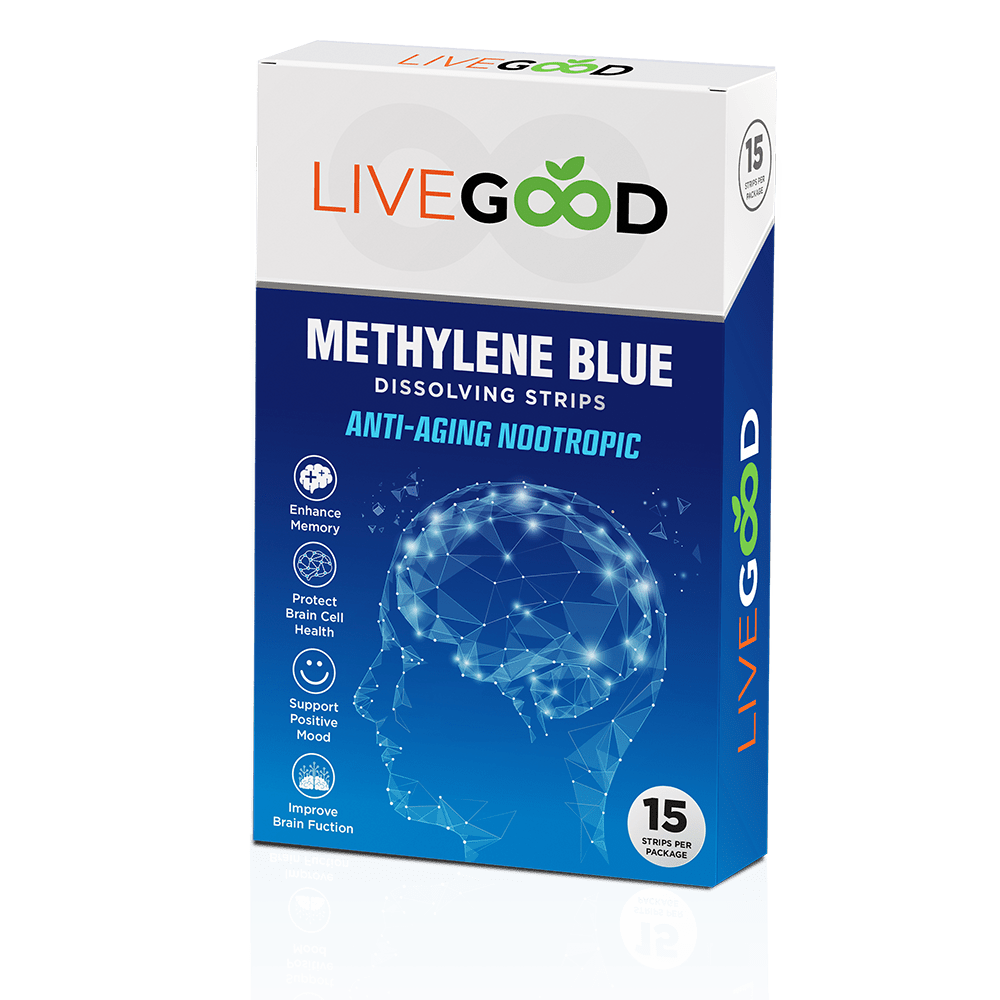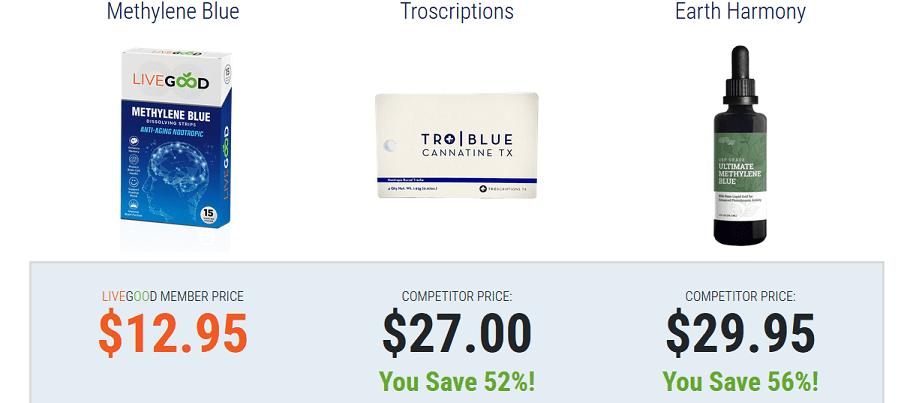Unlocking the Secrets of Methylene Blue on Cognitive Health

Unlock the science of methylene blue and its anti-aging benefits. Learn how it enhances mitochondrial function today! Watch Dr. Kuehne’s video now!
Unlocking the Secrets of Methylene Blue: An Approach to Anti-Aging and Cognitive Health
In his most recent video titled “The Science and Benefits of Methylene Blue,” Dr. Jonas Kuehne investigates this remarkable synthetic molecule and the possible anti-aging properties ascribed to it. Methylene blue’s first applications were as a dye and then as a medicine for a variety of conditions. We now know that it was used 100 years ago to stain cellular structures in the first step of what would become the field of cell biology, not to mention its medicinal use for malaria and other conditions. But what makes methylene blue so special? And could it really help improve our health? Dr. Kuehne makes a strong case for its direction toward future applications, particularly in the growing field of anti-aging research.
Key Methylene Blue Takeaways
- Methylene blue, a dye, has therapeutic properties that go well beyond its original uses, and now it is showing some promise in anti-aging research.
- It enhances mitochondrial function, which is crucial for cellular energy production and reducing oxidative stress.
- Preliminary studies suggest methylene blue may improve cognitive function and combat age-related diseases like Alzheimer’s and Parkinson’s.
- Methylene blue helps cellular organelles called mitochondria work better. Mitochondrial function is key to maintaining a robust and youthful state because it is the engine that drives cellular energy production and keeps cells under stress behaving properly.
The Historical Context of Methylene Blue
The late 1800s saw the birth of methylene blue. It started as a dye and soon became recognized for its medicinal properties. It was one of the first antibiotics used in clinical settings, aimed predominantly at malaria and urinary tract infections before our modern arsenal of antibiotics, like penicillin, came on the scene. Even today, this amazing compound has a useful place in emergency medicine, especially during cyanide or carbon monoxide poisoning crises where it’s simply effective.
The compound’s shift from being a dye to a being a medicinal product illustrates its versatility. But what is really causing a stir recently is exploration into its potential anti-aging properties. There’s a lot of interest now in methylene blue’s ability to enhance mitochondrial function. And, since we know that mitochondrial dysfunction is a contributing factor to many age-related diseases, the idea that it might improve health late in life is an intriguing one.
Mitochondrial Function and Aging
Dr. Kuehne underscores the importance of mitochondria in the aging process. Mitochondria are the powerhouses of our cells. They are responsible for producing adenosine triphosphate (ATP), the energy currency of the cell. By using their collection of enzymes to perform a series of chemical reactions, they convert the fuels we take in—such as sugars and fats—into a form of energy that our cells can use. As we age, not only do our cells lose some of their power, but our mitochondria also seem to age. This deterioration can result in a host of health issues, from decreased physical function to cognitive decline.
Methylene blue serves as a redox molecule that can accept and donate electrons in the cellular pathways of our body. Its capacity to enhance the efficiency of the electron transport chain in our mitochondria makes this compound a powerful ATP (adenosine triphosphate) booster. By reducing the generation of reactive oxygen species (ROS), methylene blue may mitigate the damage caused by oxidative stress, thus promoting healthier aging at the cellular level.
The studies conducted on animals have given strong support to the idea that it could help humans live longer and healthier lives. These studies have shown that when certain living things, like worms and mice, are given methylene blue, they tend to live longer. Thus, they suggest that this compound might also have “anti-aging” effects in humans. But to confirm that, our top scientists will need to do a good number of solid clinical trials.

Cognitive Benefits and Neuroprotection
This blue substance has yet another intriguing facet, its potential neuroprotective effect. As Dr. Kuehne mentioned, and as he pointed out in the video, preliminary studies show that it might help reduce age-related cognitive decline, particularly in Alzheimer’s and Parkinson’s diseases. A review from 2023, which also appears in the video, suggests that it could treat neurobiological disorders, enhancing cognitive functioning and taming the oxidative stress that plagues our neurons.
Methylene blue’s capacity to traverse the blood-brain barrier makes it especially promising as a treatment for neurodegenerative disorders. It may keep our cognitive faculties intact and prevent the kind of widespread cell death that characterizes conditions like Alzheimer’s disease by helping our brain cells maintain their energy levels.
Risks and Considerations of Methylene Blue
Although methylene blue could be good for us, Dr. Kuehne doesn’t want us to rush into using it. For our own safety, we should first take the time to understand the potential downsides. Methylene blue is a “hormetic” compound. In low amounts, it seems to be helpful; in high amounts, it can be harmful. For humans, the generally accepted safe oral dose for pharmaceutical-grade methylene blue is between 0.5 and 2 milligrams for each kilogram of body weight. To put those numbers into perspective, a person weighing 70 kg (about 154 lb) should not take more than 140 mg and would be on the safe side taking around 35 mg.
There are some specific contraindications that absolutely rule out the safe use of methylene blue. Pregnancy is one, of course, but even some nonspecific conditions can make this otherwise safe dye hazardous. For example, people with glucose-6-phosphate dehydrogenase (G6PD) deficiency are at danger for adverse reactions if they use methylene blue. This also seems to be the case when it is used by anyone taking antidepressants known as serotonin reuptake inhibitors (SRIs), which are nearly always effective when prescribed but carry some amount of risk when used or combined improperly.
Sharing his own experience with methylene blue, Dr. Kuehne highlights certain benefits like enhanced mental clarity and focus. He even mentions improvements in skin health. But as with any substance, he emphasizes the importance of using it judiciously—particularly because of some potential long-term effects that a user might not want to risk. The “gut brain connection” is for real. And as an antimicrobial agent that may disrupt a user’s gut microbiome, it could possibly have some significant implications for digestive health, especially if a user doesn’t take breaks from it.
The Future of Methylene Blue Research
Methylene blue continues to be a fascinating topic of study as scientists work to understand the complexity of aging. It is a good option for upcoming anti-aging therapies because of its diverse strategy of focusing on several pathways related to aging. The molecule may have advantages, according to Dr. Kuehne, but more research is necessary. This underscores the fine line that must be drawn between the need for novel medicines and the need to assure their efficacy and safety.
The fact that it’s qualities are still being investigated is evidence of how anti-aging science is developing. Future research on the mechanisms and effects of methylene blue may reveal a major function for the substance in increasing vitality and longevity.



